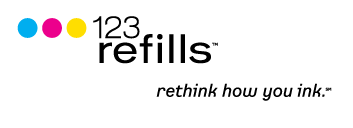2) Color laser machines are expected to gain in sales as well.
3) Black only (monochrome) laser printers are expected to fall in sales, in line with recent trends.

123 Refills is a specialized ink refills / toner refills and printer ink cartridge provider, offering over 4,000 ink and toner cartridges, refills and refill kits for the printer cartridge market. You can buy online, by phone, or in store, with an average of 50% savings compared to original brand printer ink cartridges. Rethink how you ink... 123 Refills.
Printers used to be seen as a necessary extension of the desktop PC. However today, since more and more people and companies store their information on smartphones or the Internet, HP wants to ensure everyone is still buying printers and ink.
HP's new printers will have the ability to print directly from the Internet without going through a PC. As the world's biggest seller of computer printers, HP's strategy is to position itself as the leader and innovator in the printer and ink space. Question is will Epson, Lexmark, Canon and the other giants follow suit? This is a given. Competitors such as Canon, Xerox and Ricoh have already introduced printers capable of printing documents and data from smartphones, but they are mostly aimed at business customers using office software from Google or Salesforce.com.
HP's mobile printing announcement comes 1 month after competitor Epson released its new line-up of WorkForce all-in-one printers that also feature small-business tools such as a two-sided 30-page automatic document feeder, high-dpi scanning and a 250-sheet tray. The specifications that are similar to HP’s, at nearly identical price points.
Both companies are targeting the same customer but sets them apart? Epson focuses on its ink technology that is fade, smudge, and water-resistant. HP however, focuses on mobility, a sector that’s exploding and has yet to show even a fraction of its potential, according to industry experts. The type of printer businesses opt for largely depends on their industry standard, brand recognition, and reliance on mobile devices.